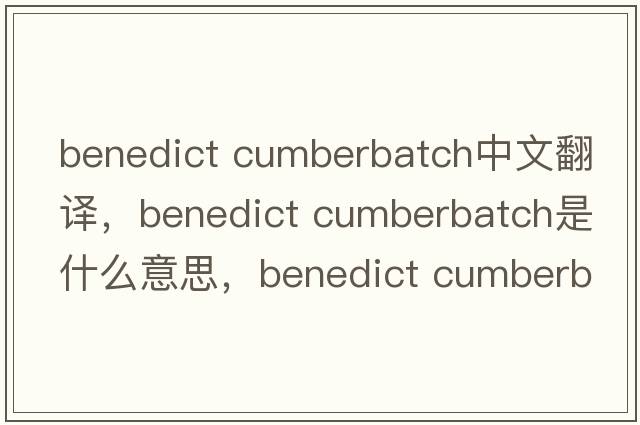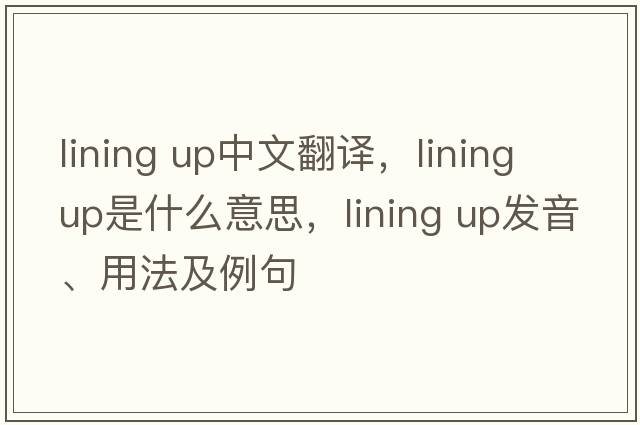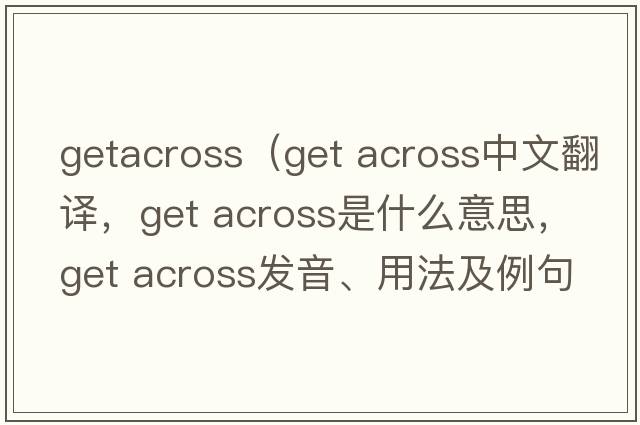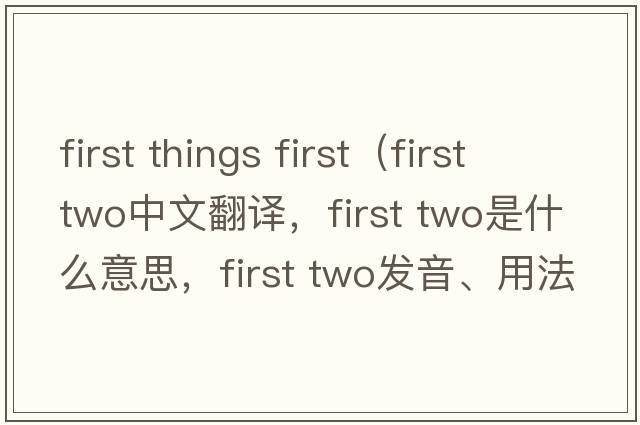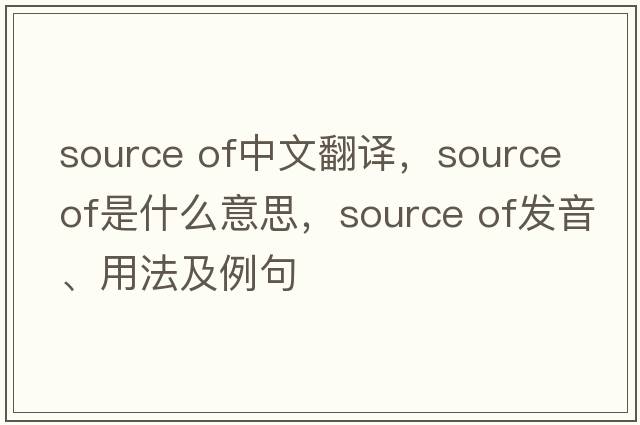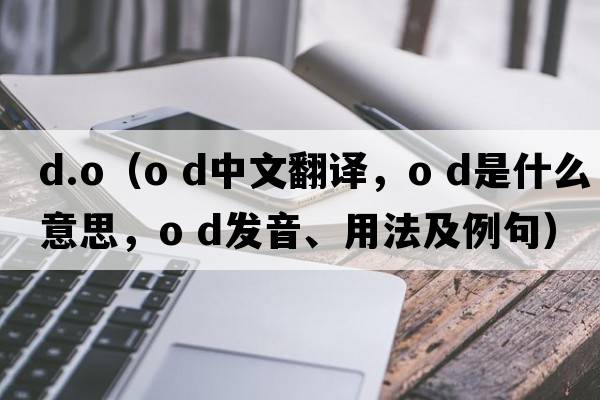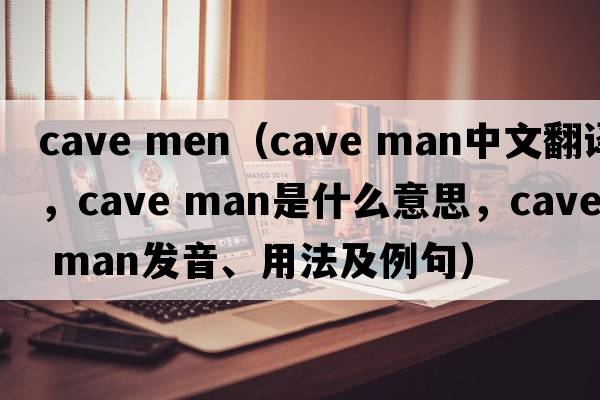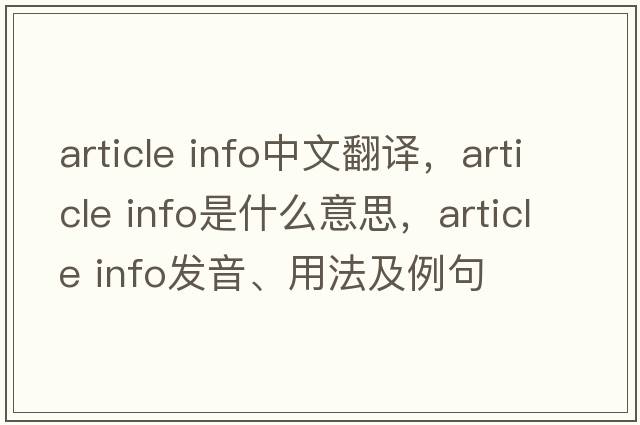traumatic brain injury中文翻译,traumatic brain injury是什么意思,traumatic brain injury发音、用法及例句
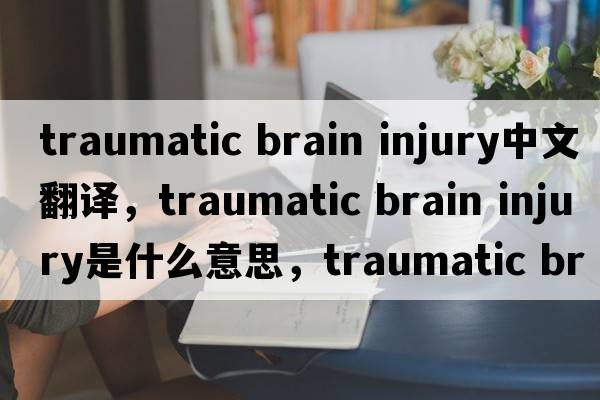
- 内容导航:
- 1、traumatic brain injury
- 2、软组织损伤新原则?
1、traumatic brain injury
traumatic brain injury发音
英: 美:
traumatic brain injury中文意思翻译
常见释义:
[医]外伤性脑损伤
traumatic brain injury双语使用场景
1、Hyperbaric oxygen for traumatic brain injury . [ comment ] .───高压氧 治疗颅脑损伤.
2、Objective To summarize clinical operation rescue experience in patients with severe traumatic brain injury.───目的总结分析对特重型对冲性颅脑损伤手术治疗体会.
3、To investigate the clinical significance of urgent surgical treatment for severe traumatic brain injury.───探讨重型颅脑损伤紧急手术救治过程安排的临床意义.
4、Objective To investigate the clinical features and the treatments of severe traumatic brain injury after intoxication.───目的总结醉酒后重型颅脑损伤的临床特点及治疗.
5、Objective : To explore clinical symptoms and factor of mental disorder caused by traumatic brain injury.───目的: 探讨脑外伤后所致精神障碍的临床表现类型以及受损部位与精神障碍的关系.
6、Terms more commonly used include abusive head trauma or inflicted traumatic brain injury.───更常用的术语有虐待性头部外伤或人为创伤性脑损伤。
7、The author introduces MRS and its application research on the traumatic brain injury.───本文对磁共振波谱分析原理及在外伤性脑损伤中的应用研究作一简要介绍.
8、Objective : To study the expression of purinoceptor P 2 X 4 subunit after the traumatic brain injury in rats.───目的: 观察大鼠脑外伤后嘌呤受体亚型P2X4的表达水平.
9、Distortion of balance is often a consequence of traumatic brain injury.───平衡失真往往是创伤性脑损伤带来的结果。
10、Objective To explore the effect of estradiol benzoate on traumatic brain injury ( TBI ).───目的探讨雌激素在颅脑创伤中的作用.
11、Mild traumatic brain injury, pain, and substance abuse are common.───轻度颅脑损伤,疼痛,药物滥用是常见的。
12、Neuronal necrosis and apoptosis play vital roles in the brain dysfunction post - traumatic brain injury ( TBI ).───创伤性脑损伤 ( TBI ) 诱发神经元病理性坏死和凋亡是脑功能障碍的重要原因.
traumatic brain injury相似词语短语
1、traumatic incident───创伤性事件
2、repetitive strain injury───(肢体的)重复性劳损
3、repetitive strain injuries───(肢体的)重复性劳损
4、hamstring injury───奈绳肌损伤
5、traumatic memory───创伤记忆
6、traumatic experience───惨痛的经历
7、suffer an injury───受到伤害
8、;ain injury───脑损伤
9、traumatically───外伤地(traumatic的副词形式);创伤地(traumatic的副词形式)
2、软组织损伤新原则?
软组织损伤处理的新原则:PEACE 和 LOVE
软组织损伤的康复过程是复杂的。多年来,指导软组织损伤的康复方法从ICE到RICE,又从PRICE到POLICE。尽管这些康复方法众所周知,但支持这些方法的证据是有限的。ICE/RICE/PRICE侧重于急性治疗,忽略了组织愈合的亚急性阶段和慢性阶段。
我们提出了两个新的略写词来进一步优化软组织损伤的康复过程。我们的方法包括急性护理期 PEACE(和平)原则和后续管理的 LOVE(爱)原则。PEACE & LOVE概述了健康教育和心理社会因素对康复的重要性。此外,虽然消炎药对疼痛和功能的恢复有好处,但我们认为其对组织的修复具有潜在的有害影响,因此我们不建议使用它们来促进软组织恢复。
在软组织损伤的急性阶段,应该使用PEACE原则来进行处理。
P-保护
停止或限制运动1-3天,以减少出血,防止受伤肌纤维的肿胀,并减少受伤加重的风险。尽量减少休息时间,长时间的休息会使组织力量和性能下降。依靠疼痛信号来移除保护“设施”并逐步恢复运动。
E-抬高
将患肢抬高到高于心脏的位置,以促进组织液从组织中流出。尽管支持这种方法的证据不足,但考虑到其较低的风险/收益比值,仍建议抬高患肢。
A-避免使用抗炎药物
抗炎药物可能对组织的长期愈合有害。不同阶段的炎症有助于软组织更好的再生。不推荐使用药理学方法抑制此过程,因为这可能损害组织愈合,特别是使用较高剂量时。
我们对低温疗法存有质疑。尽管在临床医生和相关人群中冰块被广泛使用,但没有高质量的证据表明冷冻疗法对软组织损伤的效果。即使冰块主要用于镇痛,但其也可能破坏炎症、血管生成和血管再通,延缓中性粒细胞和巨噬细胞浸润,增加未成熟肌纤维,导致组织再生受损和胶原合成过剩。
C-加压
使用胶带或绷带产生的外部机械性压力有助于限制关节内水肿和组织出血。尽管有相互矛盾的研究,但踝关节扭伤后施加压力似乎可以减轻肿胀,改善生活质量。
E-教育
治疗师应告诉患者积极康复的好处。与主动疗法相比,损伤后早期的被动疗法,如电疗、手法治疗或针灸,对疼痛和功能的影响微不足道;从长远来看,被动疗法甚至可能适得其反。事实上,养成“需要被修复”的习惯会对治疗师产生依赖性,最终会对结果产生消极的态度,从而导致症状的持续。好的健康教育和负荷指导将有助于避免过度治疗,过度治疗会增加药物注射或手术的风险,以及由于失能补偿(例如腰背痛)而增加的医疗成本。在技术和高科技治疗方法可供人们选择的时代,我们对患者康复时间的设定应切合实际康复时间,而不是追求神奇快速的治疗方法。
在急性期之后的后续阶段,应该使用LOVE原则了进行处理。
L-负荷
积极的运动和锻炼有益于大多数肌肉骨骼疾病患者。应尽早地增加机械应力,在症状允许的情况下尽快地恢复正常活动。最佳的负荷(不产生疼痛情况下)可通过机械应力来促进肌肉、肌腱和韧带的修复、重塑以及组织耐受能力的建立。
O-乐观
大脑在康复干预中起着关键作用。灾难性事故、抑郁和恐惧等心理因素可能会阻止恢复,与病理生理学相比,心理因素更能解释踝关节扭伤后的症状和局限性。患者的悲观预期也与次优的结果和较差的预后有关。从实际出发的同时,医护工作者应鼓励患者保持乐观,进而提高最佳恢复的可能性。
V-血管形成
包括有氧运动在内的身体活动是肌肉骨骼损伤管理的基石。虽然在运动剂量方面尚需进一步研究,但无痛的有氧运动应在受伤几天后就开始,以提高动力,增加受伤结构处的血流量。早期的动员和有氧运动可以改善肌肉骨骼疾病患者的功能、工作状态,减少对止痛药的需求。
E-活动
有大量的证据表明活动可以治疗踝关节扭伤并减少复发性损伤的概率。活动有助于损伤后早期运动能力、力量和本体感觉的恢复。应避免疼痛,以确保在恢复的亚急性期中得到最佳修复,可以用疼痛指导运动。
处理软组织损伤不仅仅是短期的损伤控制。与其他损伤相似,临床医生应着眼于长期的结果。无论处理脚踝扭伤还是韧带拉伤,我们希望这篇“Bolg @ British Journal of Sports Medicine”上的这篇“Soft tissue injuries simply need PEACE & LOVE”文章,能鼓励临床医生给和平(PEACE)一个机会,或许所有的软组织损伤都需要爱(LOVE)。
参考文献:
[1] van den Bekerom MPJ, Struijs PAA, Blankevoort L, et al. What is the evidence for rest, ice, compression, and elevation therapy in the treatment of ankle sprains in adults. J Athl Train, 2012;47: 435-43.
[2] Bleakley CM, Glasgow PD, Phillips N, et al. Guidelines on the management of acute soft tissue injury using protection rest ice compression and elevation. London: ACPSM, 2011.
[3] Bleakley CM, Glasgow P, MacAuley DC. Price needs updating, should we call the police? Br J Sports Med,2012;46: 220-1.
[4] Vuurberg G, Hoorntje A, Wink LM, et al. Diagnosis, treatment and prevention of ankle sprains: Update of an evidence-based clinical guideline. Br J Sports Med,2018;52: 956.
[5] Doherty C, Bleakley C, Delahunt E, et al. Treatment and prevention of acute and recurrent ankle sprain: An overview of systematic reviews with meta-analysis. Br J Sports Med,2017;51: 113-25.
[6] Duchesne E, Dufresne SS, Dumont NA. Impact of inflammation and anti-inflammatory modalities on skeletal muscle healing: From fundamental research to the clinic. Phys Ther Sport,2017;97: 807-17.
[7] Yerhot P, Stensrud T, Wienkers B, et al. The efficacy of cryotherapy for improving functional outcomes following lateral ankle sprains. Ann Sports Med Res,2015;2: 1015.
[8] Singh DP, Barani Lonbani Z, Woodruff MA, et al. Effects of topical icing on inflammation, angiogenesis, revascularization, and myofiber regeneration in skeletal muscle following contusion injury. Front Physiol,2017;8: 93.
[9] Hansrani V, Khanbhai M, Bhandari S, et al. The role of compression in the management of soft tissue ankle injuries: A systematic review. Eur J Orthop Surg Traumatol,2015;25: 987-95.
[10] Bleakley CM, O’Connor SR, Tully MA, et al. Effect of accelerated rehabilitation on function after ankle sprain: Randomised controlled trial. BMJ,2010;340: c1964.
[11] Kim TH, Lee MS, Kim KH, et al. Acupuncture for treating acute ankle sprains in adults. Cochrane Database Syst Rev,2014;6: CD009065.
[12] Lewis J, O’Sullivan P. Is it time to reframe how we care for people with non-traumatic musculoskeletal pain? Br J Sports Med,2018;epub ahead of print, 25 June 2018.
[13] Graves JM, Fulton-Kehoe D, Jarvik JG, et al. Health care utilization and costs associated with adherence to clinical practice guidelines for early magnetic resonance imaging among workers with acute occupational low back pain. Health Serv Res,2014;49: 645-65.
[14] Webster BS, Choi Y, Bauer AZ, et al. The cascade of medical services and associated longitudinal costs due to nonadherent magnetic resonance imaging for low back pain. Spine,2014;39: 1433-40.
[15] Khan KM, Scott A. Mechanotherapy: How physical therapists’ prescription of exercise promotes tissue repair. Br J Sports Med,2009;43: 247-52.
[16] Lin I, Wiles L, Waller R, et al. What does best practice care for musculoskeletal pain look like? Eleven consistent recommendations from high-quality clinical practice guidelines: Systematic review. Br J Sports Med,2019;Epub ahead of print; 2019 Mar 2.
[17] Roy JS, Bouyer LJ, Langevin P, et al. Beyond the joint: The role of central nervous system reorganizations in chronic musculoskeletal disorders. J Orthop Sports Phys Ther,2017;47: 817-21.
[18] Briet JP, Houwert RM, Hageman MGJS, et al. Factors associated with pain intensity and physical limitations after lateral ankle sprains. Injury,2016;47: 2565-9.
[19] Bialosky JE, Bishop MD, Cleland JA. Individual expectation: An overlooked, but pertinent, factor in the treatment of individuals experiencing musculoskeletal pain. Phys Ther,2010;90: 1345-55.
[20] Sculco AD, Paup DC, Fernhall B, et al. Effects of aerobic exercise on low back pain patients in treatment. Spine J,2001;1: 95-101.
版权声明: 本站仅提供信息存储空间服务,旨在传递更多信息,不拥有所有权,不承担相关法律责任,不代表本网赞同其观点和对其真实性负责。如因作品内容、版权和其它问题需要同本网联系的,请发送邮件至 举报,一经查实,本站将立刻删除。

